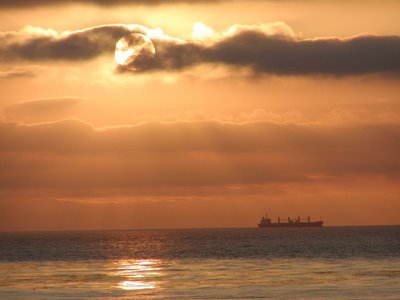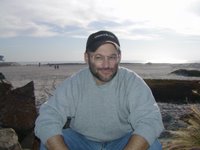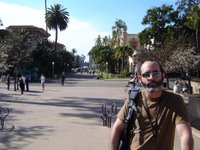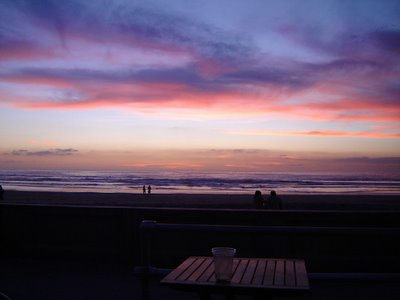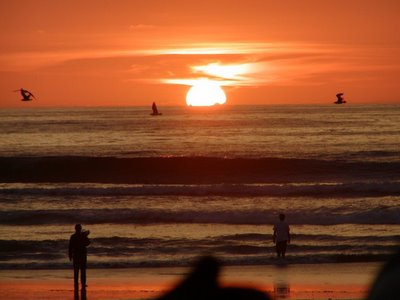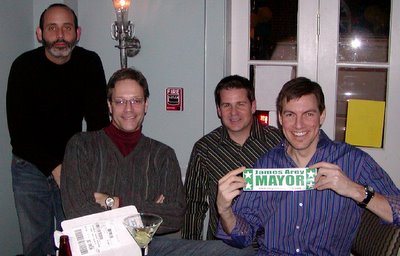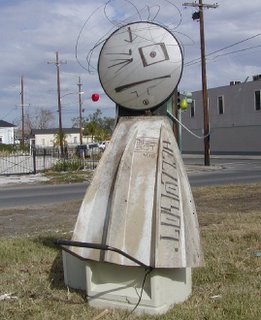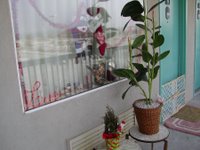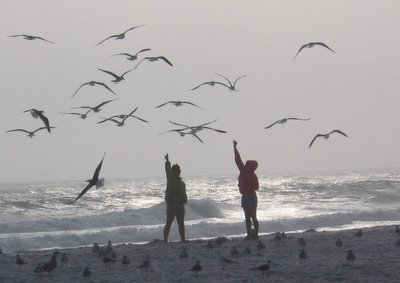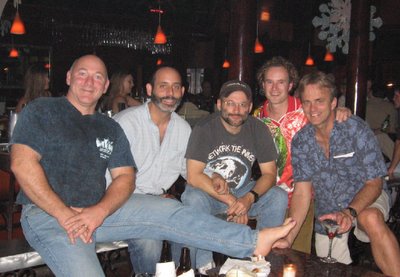 . . . you've seen them all. Well, not quite.
. . . you've seen them all. Well, not quite.Day two in San Diego found us on the beach along the aptly named Sunset Cliffs where we watched another spectacular end to a day.
As the sun dropped into the Pacific Ocean, surfer dudes crawled out of the inky water like migrating sea turtles returning to their spawning ground to lay eggs under the moonlight.
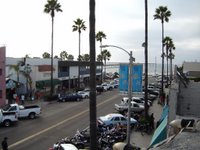 Above the cliffs sits Ocean Beach, a self-contained San Diego neighborhood favored by slackers of all types and ages. The main strip is lined with coffee shops, bars, restaurants and low-end antique stores, and sort of reminded me of Magazine Street in New Orleans.
Above the cliffs sits Ocean Beach, a self-contained San Diego neighborhood favored by slackers of all types and ages. The main strip is lined with coffee shops, bars, restaurants and low-end antique stores, and sort of reminded me of Magazine Street in New Orleans.The only blemish along the drag is a Starbuck's store which drew harsh protests from locals before it moved in.

At Hodad's, a food joint of some renown, Rex ordered the double bacon cheeseburger and I followed suit.
I wasn't prepared for what arrived 10 minutes later - the most gigantic burger I've ever laid eyes on. It stood at least six inches off the plate and was oozing cheese and bursting with what looked to be half a pound of bacon. Port of Call in New Orleans only wishes it could match this!
We ended the night drinking German beer at Sunshine Company Saloon.
Rex says we could watch a spectacular sunset from a different spot in San Diego every day for a month. That's easy to believe.
